KYOTO
JAPAN'S OLD CAPITAL
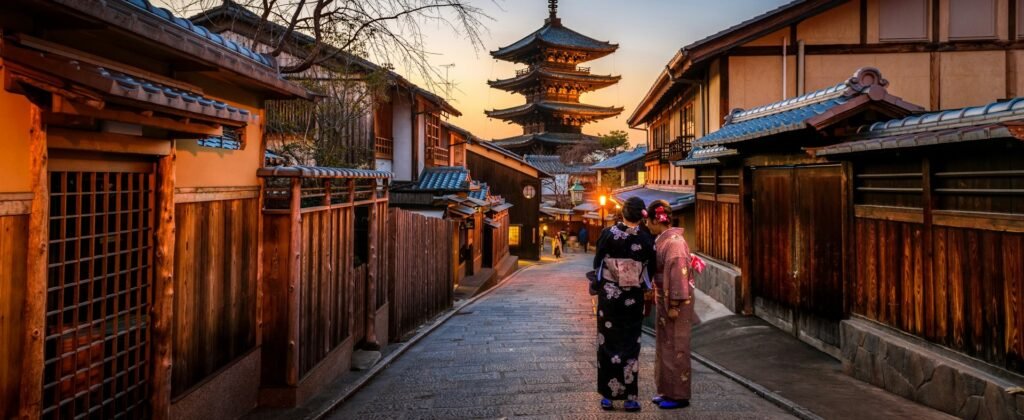
It helps keep this site running, and we appreciate your support!
Sightseeing
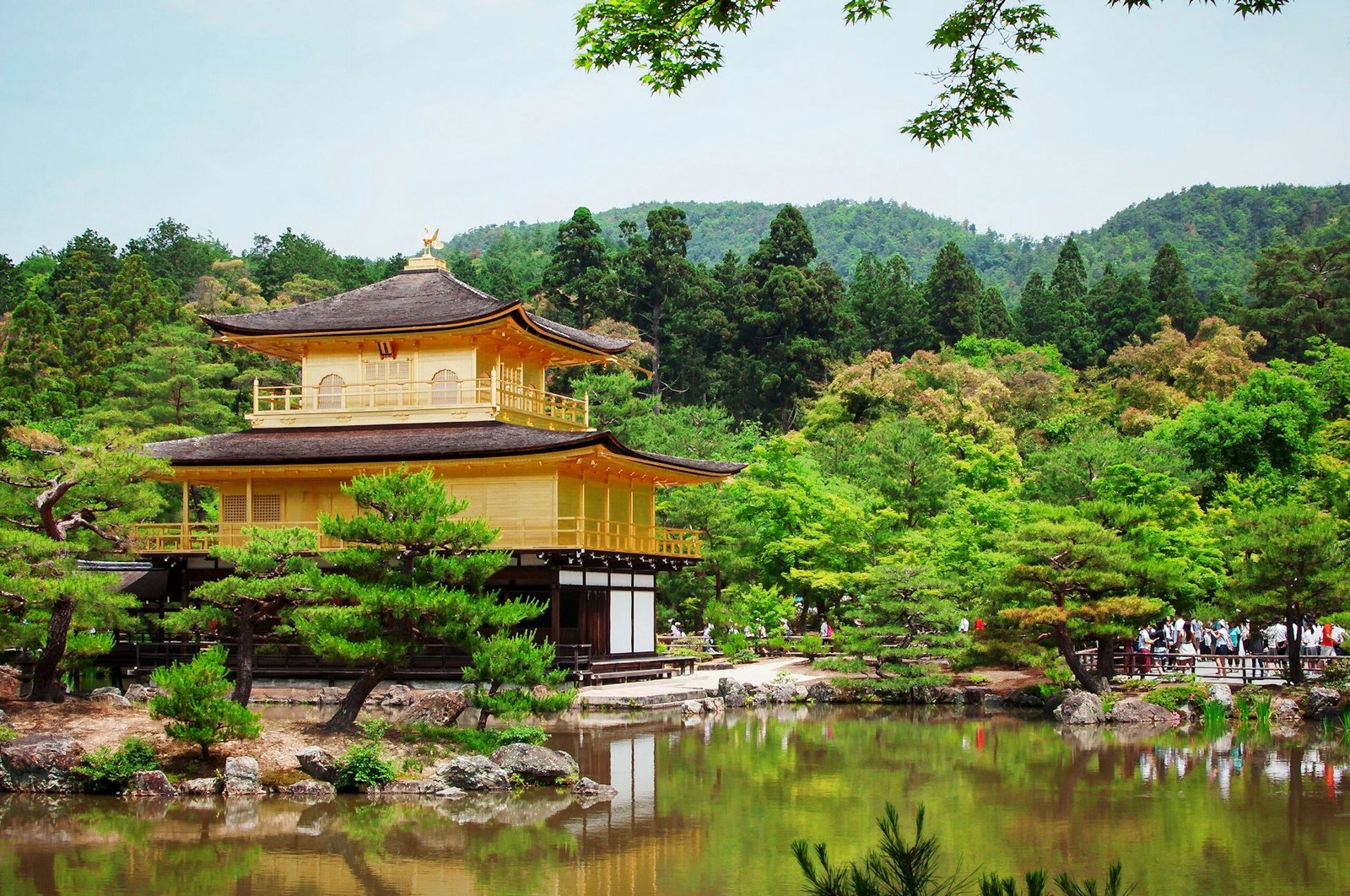
Kinkaku-ji
Kinkaku-ji, the Golden Pavilion, is a Zen Buddhist temple in Kyoto, its gold-leaf exterior gleaming brilliantly over the Kyoko-chi pond. Built in 1397 as Shogun Ashikaga Yoshimitsu’s retirement villa, it later became a UNESCO World Heritage site, epitomizing Kyoto’s elegance. The peaceful gardens and tiered design—blending aristocratic, samurai, and Zen styles—enhance its stunning facade. Visit early to dodge crowds and soak in its serene, timeless charm.
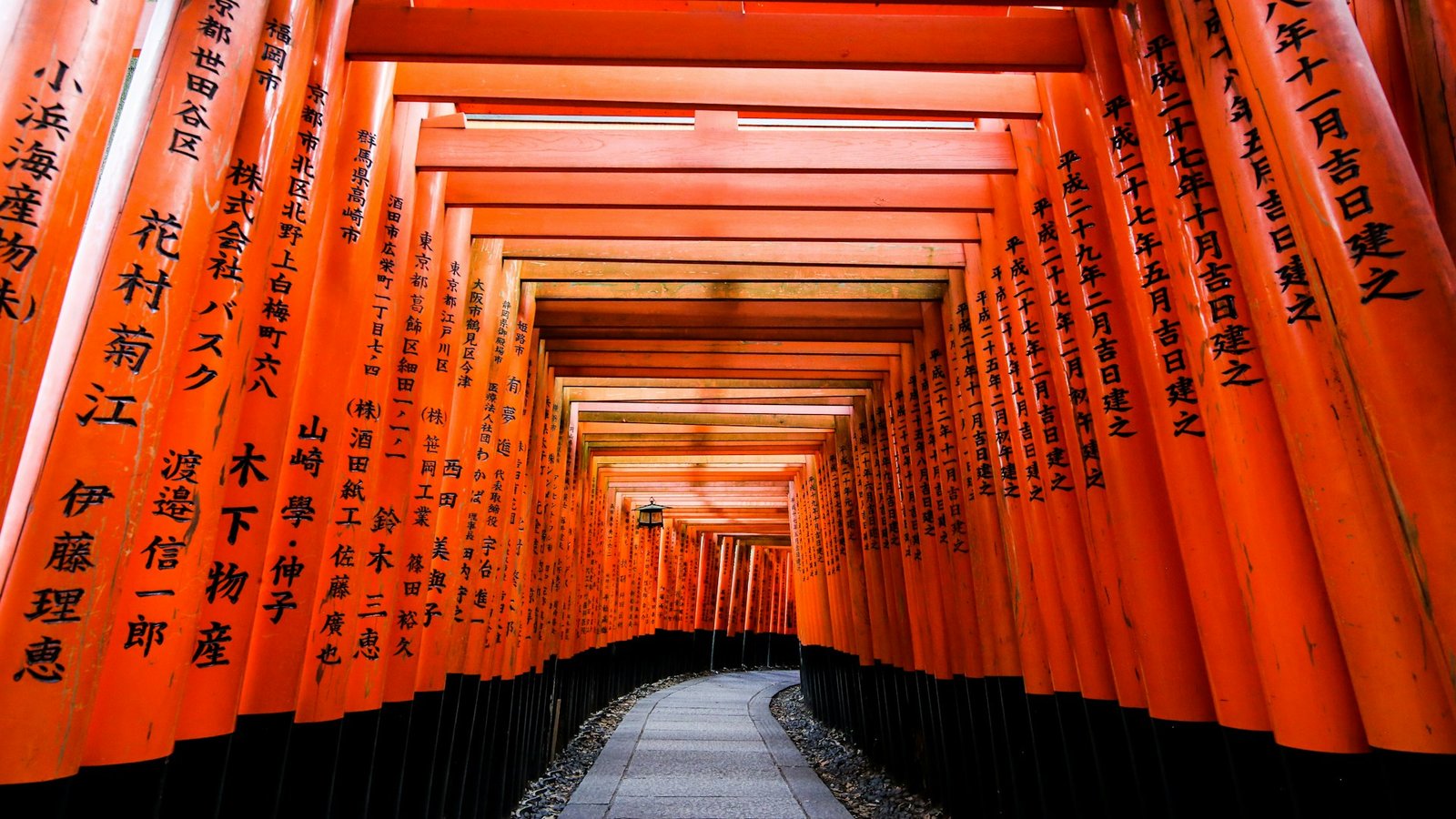
Fushimi Inari Taisha
A Shinto shrine at Mount Inari’s base enchants with thousands of red torii gates winding up the hill. Dedicated to Inari, the deity of rice and prosperity since 711 AD, Fushimi Inari Taisha is famed for its Senbon Torii paths. The trails offer a quick stroll or hike, lined with fox statues. Its vibrant beauty shines at dawn or dusk, welcoming visitors to explore for free.

Arashiyama Bamboo Grove
Just west of Kyoto lies a natural marvel, the Arashiyama Bamboo Grove, where towering stalks form a lush, green canopy over a winding path. Rooted in the historic Arashiyama district near Tenryu-ji Temple, this serene grove hums with rustling leaves, offering a mystical escape. Planted centuries ago, it’s perfect for a quiet walk or bike ride, especially at sunrise when light filters through. Pair it with Togetsukyo Bridge for a deeper taste of the area’s timeless tranquility.
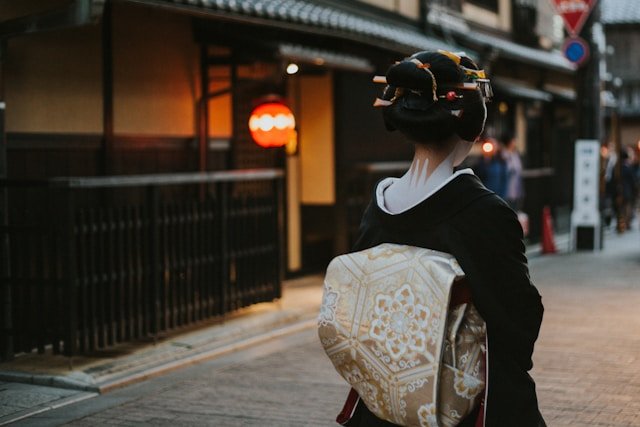
Gion District
Steeped in tradition, the Gion district pulses with life along its narrow, lantern-lit streets lined with wooden machiya houses. Born near Yasaka Shrine in the Middle Ages, this geisha quarter is Kyoto’s cultural heart, where geiko and maiko still grace the alleys. A dusk stroll down Hanami-koji might reveal these figures, while teahouses offer sake and kaiseki. Free to explore, its preserved charm evokes old Japan—best savored with a theater stop for a rare performance.

Ginkaku-ji
In eastern Kyoto stands a Zen temple, Ginkaku-ji, dubbed the Silver Pavilion despite its unpainted wood—silver was never applied. Erected in 1482 by Shogun Ashikaga Yoshimori as a retreat, it radiates wabi-sabi charm with its rock garden and mossy grounds. A UNESCO site along the Philosopher’s Path, it features a sculpted sand mound, Kogetsudai. Less ornate than its golden kin, it’s a peaceful gem, best seen in morning light for its subtle elegance.
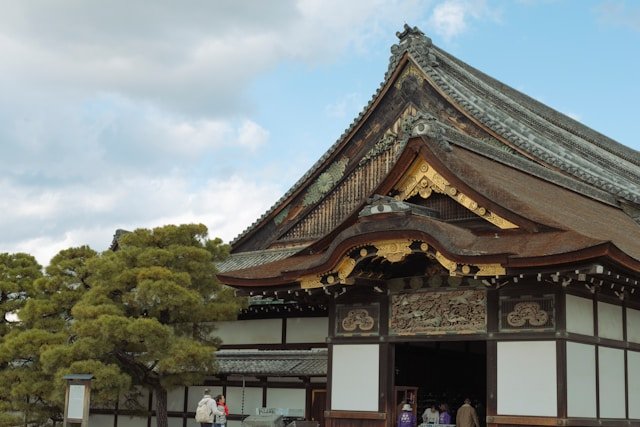
Nijo Castle
From 1603, a fortified masterpiece emerged as Shogun Tokugawa Ieyasu’s Kyoto home—Nijo Castle—with moats and chirping “nightingale floors.” A UNESCO World Heritage site, its Ninomaru Palace boasts ornate paintings and sliding doors, while gardens bloom seasonally. Built to awe and protect, it opens a window to Japan’s feudal era. Visit early to hear the floors sing and enjoy the grounds’ calm before midday crowds gather.
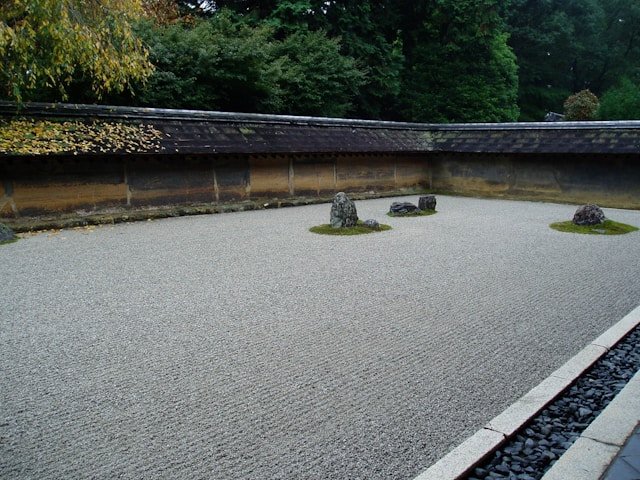
Ryoan-ji
A Zen temple since 1450, Ryoan-ji harbors Japan’s most enigmatic rock garden—raked gravel with 15 stones, never all visible at once. Near Kinkaku-ji, this UNESCO treasure invites meditation amid stark beauty, framed by a koi pond and mossy trees. Designed to spark thought, its mystery endures centuries later. Slip in early to ponder its riddle and feel the stillness of Kyoto’s spiritual essence.
Activities
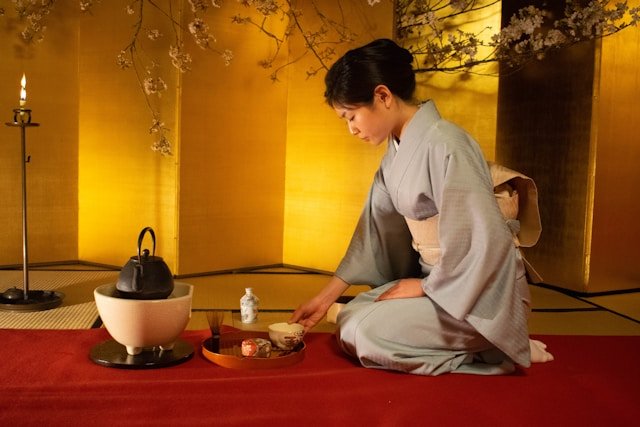
Tea Ceremony Experience
Participate in a traditional Japanese tea ceremony, where you’ll learn the art of preparing and drinking matcha in a serene setting. Places like En Tea House in Gion or Camellia Tea Ceremony near Kiyomizu-dera offer sessions (around $20–$40 USD) with English guidance. It’s a calming, authentic dive into Kyoto’s Zen heritage.
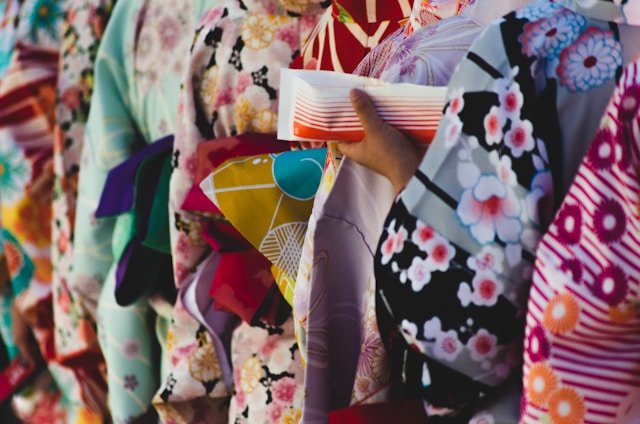
Kimono Rental and Photoshoot
Rent a kimono or yukata and stroll Kyoto’s historic streets, like Gion or Arashiyama, for stunning photos. Shops like Okamoto near Kiyomizu-dera provide rentals starting at $25–$50 USD for a few hours, including hair styling. It’s a fun way to feel part of the city’s timeless vibe—perfect for Instagram or just soaking in the atmosphere.
Hozugawa River Boat Ride: Nature’s Wild Ride
The Hozugawa River Boat Ride is a two-hour cruise from Kameoka to Arashiyama, gliding 16 km down a scenic river framed by rugged gorges and seasonal splendor—cherry blossoms in spring, fiery leaves in fall. Skilled boatmen steer flat-bottomed wooden boats with poles and oars, weaving through calm stretches and thrilling rapids. At ¥6,000 for adults (¥4,500 for kids), it’s a splurge, but the views and the vibe—plus a floating snack boat near the end—make it a standout. Pair it with the Sagano Romantic Train for a full day of Kyoto’s wild beauty.
The National Museum of Modern Art, Kyoto: Art with a Local Twist
The National Museum of Modern Art, Kyoto (MoMAK) showcases 20th-century works with a Kansai flair—think Kyoto School paintings and bold ceramics. Entry’s ¥500 (more for special exhibits), and its sleek concrete digs near Heian Shrine house over 13,000 pieces, from nihonga to avant-garde. It’s compact, so an hour or two does it, but the focus on regional artists sets it apart. Check the calendar for rotating shows—quiet, creative, and a cool break from temple-hopping.
Kyoto Bus Tour: City Sights, No Sweat
A Kyoto Bus Tour—like the Sky Hop Bus—loops you past Nijo Castle, Kinkaku-ji, and Gion without the hassle of train swaps. For ¥3,000-¥4,000 a day, hop on and off at your pace, with multilingual audio spilling tales of Kyoto’s past. Buses run every 30-60 minutes, hitting major stops near JR stations. It’s a comfy, no-plan-needed way to see the sprawl—ideal if you’re short on time or just want to soak it in from a cushy seat.
Flights
Both airports offer easy access to Kyoto via train or bus, with KIX being the better bet for international travelers. Keep an eye on seasonal price surges during cherry blossom season (late March to early April), the autumn foliage peak (November), and major holidays like Obon in August—booking outside these periods can help you snag cheaper fares.
Hotels
Dining
Tips
Weather
Value Index
Kyoto strikes a sweet spot between affordability and premium experiences, offering a wealth of cultural riches that don’t always demand a high price tag. Compared to pricier cities like Tokyo or Western hotspots like Paris, Kyoto delivers world-class heritage—think UNESCO sites and ancient traditions—for a fraction of the cost. Public transport is efficient and cheap, food ranges from budget-friendly to high-end, and many top sights are low-cost or free. It loses a couple stars because peak seasons (spring and fall) jack up accommodation prices, and some unique experiences, like geisha dinners, can dent your wallet if you’re not careful.
On the cheap side, Kyoto shines with its accessible attractions and eats. Most shrines, like Fushimi Inari with its iconic torii gates, are free, while temples like Kinkaku-ji charge just $3–$5 USD—peanuts compared to museum fees elsewhere. Public buses ($2 USD/ride or $6 USD/day pass) make getting around a steal, and you can grab tasty ramen or nishin soba for $7–$12 USD at local joints. Nishiki Market’s street food, like pickled tsukemono, is a bargain at a few bucks.
Accommodation can be wallet-friendly too—hostels start at $20 USD, and business hotels hover around $50–$80 USD—making Kyoto a solid deal for budget travelers. What’s expensive? Peak-season hotels can soar past $200 USD/night, especially ryokans with meals ($250+ USD/person), and kaiseki dinners or private geisha shows can easily top $100–$150 USD. Splurging here feels optional, though—Kyoto’s charm doesn’t hinge on breaking the bank.
